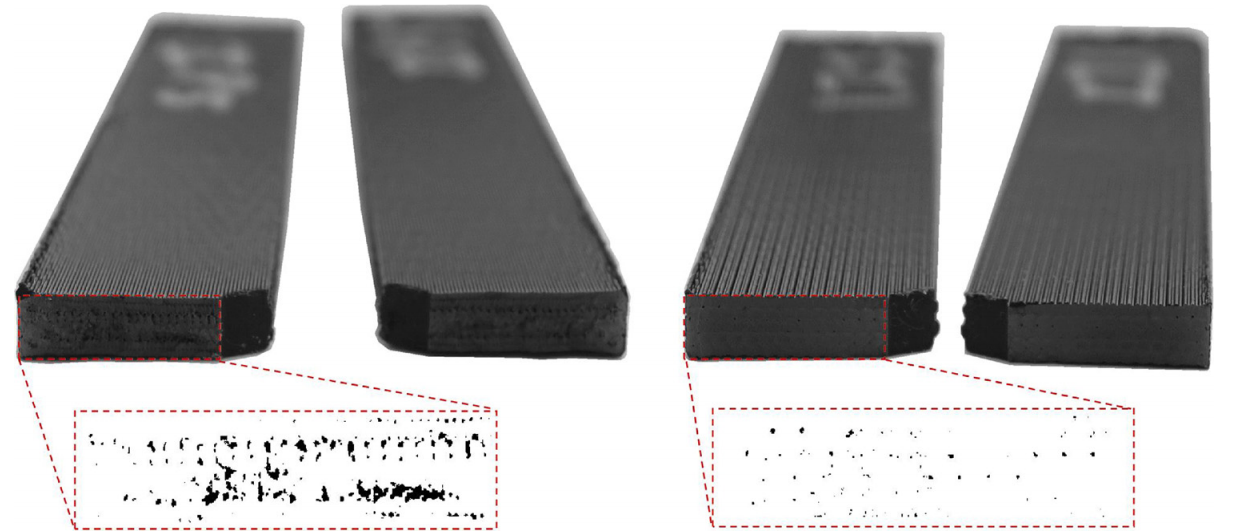Researchers from the University of Massachusetts Lowell have developed a new method of hybrid manufacturing that conjoins FFF 3D printing and injection molding.
Dubbed ‘injection printing’, the novel process increases production rates while significantly improving the strength and stiffness of parts. The study’s lead author, David Kazmer, has since filed a patent for the technology.

FFF vs injection molding
Extrusion-based 3D printing, or FFF, is the most widely used sub-technology within additive manufacturing. It involves heating a thermoplastic filament until it is molten, which is then deposited selectively through a small nozzle typically only 0.4mm in diameter.
FFF printed parts aren’t constrained by the geometric limitations of subtractive or formative technologies, but they do have their shortcomings. They tend to lack in the mechanical strength department, often have poor feature resolutions, and typically do not lend themselves to high throughput production.
In contrast, injection molding, while limited to the shape of the mold, produces polymer parts with unmatched mechanical properties at significantly higher volumes. The new injection printing process aims to bridge this gap, drawing on the strengths of both technologies to form a superior hybrid.
How does it work?
Injection printing actually operates on a fairly simple premise – a hollow shell is FFF printed and the same nozzle is used to inject a polymer into the resultant cavity, giving the part ‘100% infill’. It makes use of a hotend’s ability to vary its temperature, with lower temperatures printing the shell and higher temperatures injecting the infill. At higher temperatures, thermoplastics are closer to a fully liquid state so their flow rates are increased, making them a more suitable volume filler.
To test the performance of the process against conventional FFF printing, the researchers printed (and filled) impact specimens and tensile bars made of ABS. The team then compared the parts to a set of geometrically identical, exclusively 3D printed counterparts.

It was found that the average stiffness, strength, and strain to failure of the injected parts were higher by 21%, 47%, and 35% respectively as a result of the higher density and isotropy. Since the same linear print velocity was used for both sample sets, it was also found that injection printing was around 3.2x faster than standard FFF printing. The researchers believe the new process has great potential as a middle-ground between the two technologies, and are currently awaiting patent approval.

Further details of the study can be found in the paper titled ‘Injection printing: additive molding via shell material extrusion and filling’. It is co-authored by David Kazmer and Austin Colon.
3D printing has previously been used in conjunction with injection molding in a bid to produce stronger, more functional parts. Just last year, researchers from the Athlone Institute of Technology combined additive manufacturing and injection molding to make medication easier to swallow. The personalized 3D printed pills have a custom micro-injected bilayer capable of releasing drugs in specific quantities.
Elsewhere, in Denmark, manufacturing provider AddiFab combined the two processes to create stronger solid cast parts. The novel Freeform Injection Molding process consists of three steps: a mold design is 3D printed via SLA technology, rinsed and post-processed, and injected with another liquid polymer. Once the mold dissolves in a water solution, a solid cast part is all that remains.
The 4th annual 3D Printing Industry Awards are coming up in November 2020 and we need a trophy. To be in with a chance of winning a brand new Craftbot Flow IDEX XL 3D printer, enter the MyMiniFactory trophy design competition here. We’re happy to accept submissions until the 30th of September 2020.
Subscribe to the 3D Printing Industry newsletter for the latest news in additive manufacturing. You can also stay connected by following us on Twitter and liking us on Facebook.
Looking for a career in additive manufacturing? Visit 3D Printing Jobs for a selection of roles in the industry.
Featured image shows cross-section of the injection printing process. Image via UMass.


